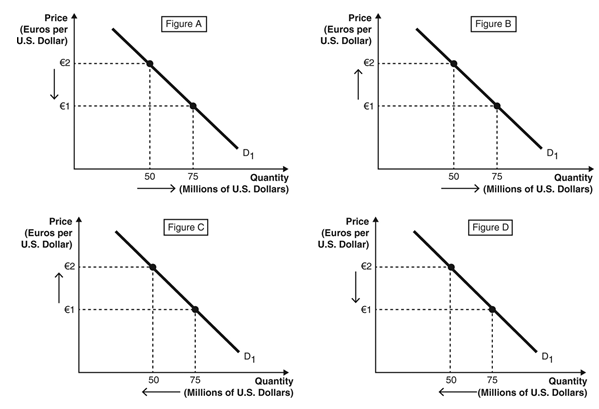The arrows in Figures A–D represent possible movements of the exchange rate (euros per U.S. dollar) and the quantity of U.S. dollars buyers are willing and able to buy. Use these figures to answer the following questions. 
-An appreciation of the euro against the U.S.dollar is represented by Figure ________,and a depreciation of the U.S.dollar against the euro is represented by Figure ________.
Definitions:
Germ Layer
The three primary layers of cells (ectoderm, mesoderm, and endoderm) in the early embryo that give rise to all organs and tissues in the body.
Respiratory System
The biological system consisting of specific organs and structures used for gas exchange in animals and plants.
Ectoderm
The outermost of the three primary layers in an embryo, from which arises the nervous system, skin, and various sensory organs.
Neonate Adaptations
Physiological and anatomical changes a newborn undergoes to transition from intrauterine to extrauterine life, ensuring survival outside the womb.
Q16: Monetary neutrality is<br>A) when a central bank
Q60: When a foreign supplier sells a good
Q63: Over the past five years, you have
Q71: According to the figure, expansionary monetary policy
Q79: Traveling abroad to country B, you notice
Q83: If people anticipate the strategies of the
Q120: The euro is an unusual currency because<br>A)
Q200: In preparing a statement of cash flows,
Q208: The asset turnover is<br>A) net sales divided
Q242: If a company has a current